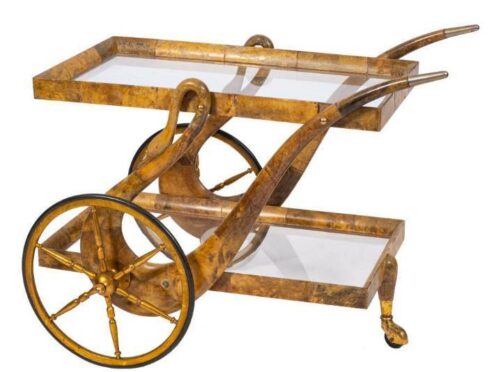When bentwood furniture first appeared in the mid-19th Century it was a revolutionary development.
It owed its origins to the 1850s-period German-Austrian cabinetmaker Michael Thonet.
Thonet’s experimentation in Vienna allowed him to perfect the technique of using steam to soften birch wood, bending it after heating into curvilinear shapes, and then leaving it to cool and dry back into solid form.
His bentwood chairs transformed furniture and received a gold medal at the 1867 World Fair in Paris.
The ‘chair of chairs’
His 1859 chair Number 14, better known as the coffee shop chair, is still called the ‘chair of chairs’ with 50 million made and production continuing today.
Bentwood furniture was not only decorative and stylish – it was light, comfortable and inexpensive. Eventually, it was widely used in hotels, shops and restaurants.
The bentwood technique was revived by Le Corbusier and other leading designers and architects of the 20th Century.
Thonet’s method of steam bending, for example, can be seen in the mass-produced bent-ply chairs made by Charles and Ray Eames a century after his experiments.
The tubular-steel furniture of the 1920s was also based on his designs.
A Scottish-American designer
On February 15, the Exeter saleroom Bearnes Hampton & Littlewood sold a 1930s’ beech or birch hostess trolley possibly by Elsie de Wolfe (1865-1950).
The Scottish-American designer is best known for her modernist approach to interior furnishings in the first decades of the 20th Century.
The trolley had rectangular glass tiers tied by a bentwood ‘swan’s neck’ support, returning upwards to form the handles.
Isn’t it a fabulous example of how Michael Thonet’s invention can transform a utility object into a thing of beauty?
It took £850.










